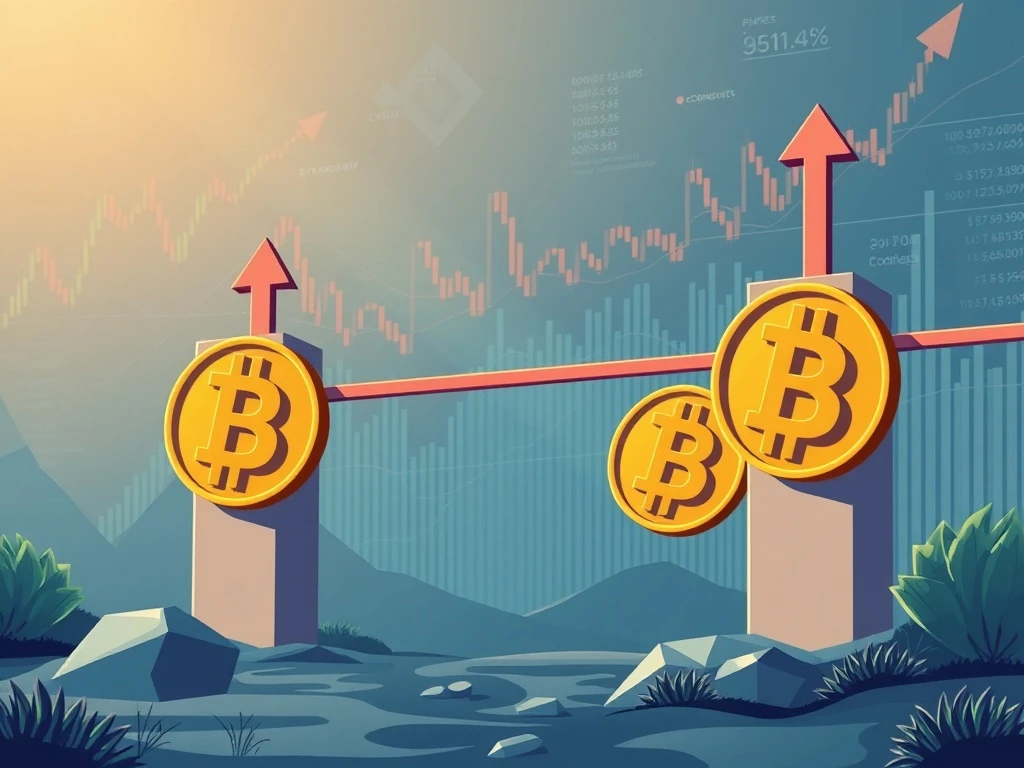Deciphering the Powerful Impact of Bitcoin Options Expiry on Crypto Prices

For many, Bitcoin (BTC) and Ether (ETH) market prices often appear unpredictable. However, a significant force frequently drives this notorious volatility: Bitcoin options expiry and Ether options expiry. When large volumes of these derivative contracts near their expiration, they send ripples through the crypto markets. Understanding this dynamic can reveal when prices are most likely to move sharply. This knowledge offers a critical edge to traders.
Understanding Bitcoin and Ether Options Expiry
To grasp options expiry, first understand an option itself. Options are contracts. They grant holders the right, but not the obligation, to buy or sell BTC or ETH. This occurs at a predetermined strike price before the contract expires. As an option contract nears its expiry, its price often becomes more volatile. Furthermore, when substantial amounts of options contracts expire simultaneously, they can significantly impact the underlying spot BTC and ETH markets. This often causes sharp price movements.
Two primary types of options contracts exist:
- Call options: Give the holder the right to buy an asset.
- Put options: Offer the right to sell an asset.
The balance between these calls and puts provides an indicator of overall market sentiment. They essentially reflect future bets on price direction. Consequently, if one type heavily outweighs the other, it can influence directional pressure on prices. Besides the expiry date, each contract also features a strike price and a premium. These three elements directly determine profitability. They also offer a mathematical framework reflecting expiry-related price movements. Unlike traditional markets, BTC options do not always follow fully standardized schedules. Nevertheless, they most commonly expire on the last Friday of every month at 08:00 UTC.
How Crypto Options Volatility Emerges from Expiries
Consider this example: if $5 billion worth of options contracts expire concurrently, even a small percentage being exercised or hedged could move the entire market. Remember, option traders possess the choice to execute a contract. Therefore, the full $5 billion in crypto would not necessarily be sold or bought. When a large options expiry date approaches, you typically observe increased trading activity. This triggers heightened market engagement as traders reposition. It also creates a surge in volume. This concentrated trading window amplifies price swings beyond normal market conditions. Thus, analyzing markets often reveals a clear correlation between option expiries and crypto options volatility. Specifically, with BTC and ETH, you can spot significant changes in market prices.
For instance, examine the BTC volatility index. An event in June 2021 saw over $4 billion in BTC and ETH options set to expire. This led to a 5.80% increase in the volatility index on June 14, marking its highest peak in five years. Quarterly Ether options expiry events usually exert a more pronounced impact than monthly expiries. Recognizing such patterns helps traders understand which expiry events will generate the most volatility. This allows them to allocate attention accordingly in their trading strategies.
Leveraging Put-Call Ratios and Max Pain Theory Crypto
As expiries draw near, trading volatility typically increases. Traders close positions to secure profits or reduce losses. This creates a feedback loop. It triggers further position adjustments and amplifies market volatility. To gauge potential market direction, traders use put-call ratio crypto. These serve as useful sentiment indicators. They offer insight into both institutional and retail sentiment. A ratio above 1 suggests more bearish bets. Conversely, ratios below 1 indicate more bullish expectations, hinting at potential price rises.
Another crucial concept is Max Pain theory crypto. Imagine it as a tug-of-war in the options markets. An option buyer desires the asset to move in their favor. Option sellers, however, prefer the opposite. Max Pain represents the price point where the largest number of options would expire worthless. This is significant because large market participants, often called “whales,” might attempt to push crypto prices toward this Max Pain point. They influence the price as expiration dates approach. Max Pain theory indicates shorter-term price movements. It also helps locate potential support and resistance levels.
Savvy traders also look beyond immediate expiry dates. Evidence of extreme put-call ratios can signal a potential market reversal. If ratios reach historical extremes, it might suggest asset prices are either oversold or overbought. This increases the likelihood of a reversal after expiry. For instance, a major options exchange, Deribit, has processed over $14.6 billion in BTC and ETH options expiry contracts, demonstrating the sheer scale of these events.
Actionable Strategies for Navigating Options Expiry Volatility
Options expiries can send cascading ripples through the BTC and ETH markets. They directly affect the underlying asset price as traders reposition. Therefore, managing these events becomes crucial. Here are actionable strategies for navigating crypto options volatility:
- Monitor key metrics: Track open interest, put-call ratios, and Max Pain points. These provide early warning signals for volatility and directional bias.
- Position hedging: Use options to protect your spot positions during high-volatility expiry periods. A hedge can limit downside risk while retaining upside opportunity. This proves critical when prices move 5% or 10% in hours.
- Diversification: Spread risk across multiple assets and timeframes. This minimizes realized losses during expiry events. High single-asset concentration over a short period can expose you to major expiries.
- Time considerations: Mark key dates on your calendar. This helps you prepare, avoid losses, and capitalize on volatile periods.
- Use advanced tools: Platforms like CoinGlass and CME Group calendars offer insights into options markets. Real-time data provides a crucial edge over simple spot traders.
- Volume and liquidity: Understand trading volume patterns and liquidity. This helps manage risk as expiry approaches. It also determines when liquidity typically dries up.
This article does not contain investment advice or recommendations. Every investment and trading move involves risk. Readers should conduct their own research when making decisions.








